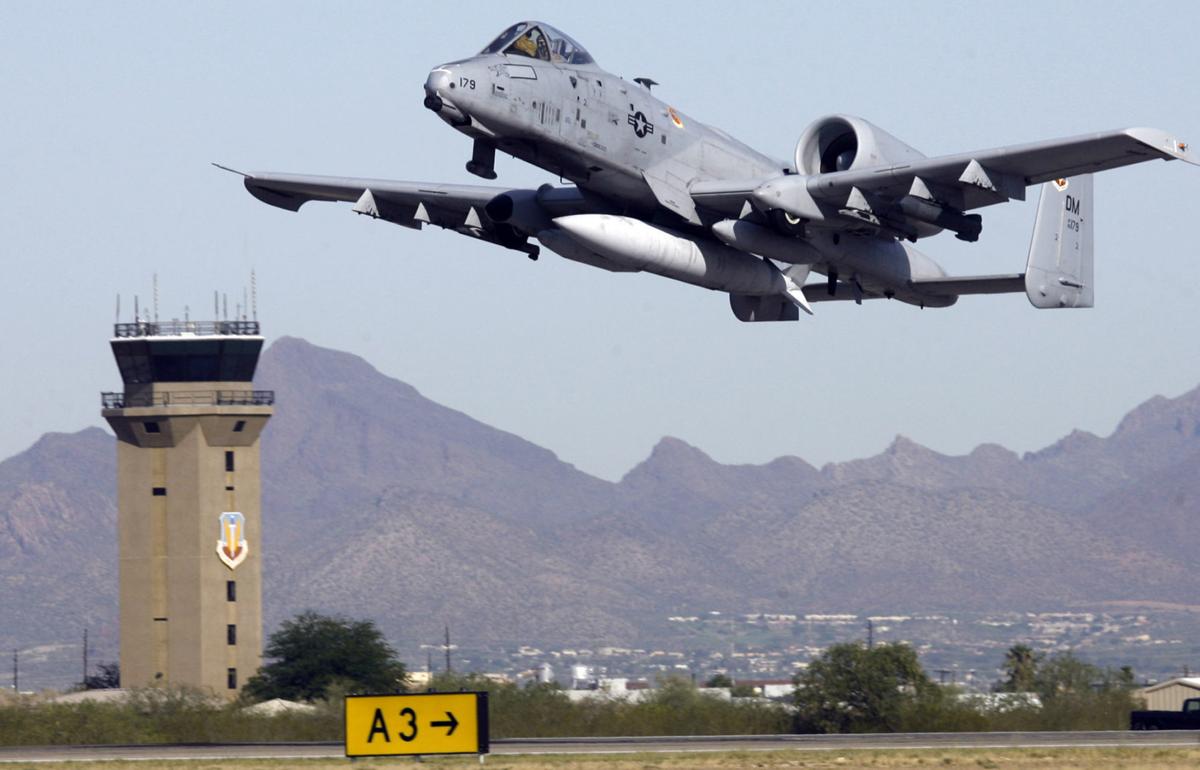Critical wing replacements for the A-10 Thunderbolt II ground-attack jet т a mainstay of operations at Davis-Monthan Air Force Base т are a step closer to continued funding following the approval of a 2020 defense authorization bill by a U.S. Senate committee.
The Senate Armed Services Committee recently approved $132 million in fiscal 2020 funding for the A-10 тWarthogт in its version of the fiscal 2020 National Defense Authorization Act (NDAA), a policy document that generally dictates appropriations.
The House Armed Services Committee plans to begin its subcommittee markups of the NDAA next week and hold a full committee markup on June 12.
The Air Force five years ago had proposed retiring the entire A-10 fleet starting this year to save money, but Congress rejected those plans and instead approved initial funding of wing replacements needed to keep about a third of the nationтs 281 A-10s flying until at least 2030.
People are also reading…
Developed in the 1970s as a tank killer, the A-10 is revered for its effectiveness in providing close air support for ground troops.
Last year, A-10 supporters, including then-Rep. Martha McSally and the late Sen. John McCain, succeeded in adding $65 million to the fiscal 2019 defense budget for A-10 wings, for a total of $144 million.
The 2019 NDAA as passed by the Senate Armed Services Committee calls for $132 million for the A-10, including $100 million for the wing replacement program, according to now-Sen. McSally.
The bill also тemphasizes the importance of maintaining critical sustainment and modernization funding through 2030,т said McSally, a former Air Force colonel and A-10 pilot.
But McSally has expressed concerns that the new wings wonтt be ready in time to save many A-10s whose wings are nearly timed out from being grounded.
The Air Force already has cut the number of planes in each A-10 squadron and says it plans to keep six of the current nine combat-ready squadrons. D-M is home base to three A-10 squadrons, including one active duty unit, an active-duty training unit and a Air Force Reserve training unit.
Air Force spokeswoman Ann Stefanek said the service plans to fly the A-10 тuntil the 2030s,т and the last four wing replacements under an initial contract with Boeing for 173 replacements will be completed this summer.
Stefanek said the Air Force is in the process of selecting a new contractor for additional wings and expects to award a contract this fall with funding for about 20 additional wings from the fiscal 2017 through 2020 budgets.
тHowever, we will definitely need continued funding in future budgets to keep as many A-10s as possible flying,т Stefanek said. тAs far as the number of squadrons (the Air Force plans to keep), each year we reassess our force structure as part of our budget process.т
The Senate committee markup of the NDAA also:
- Fully funds the presidentтs request of $114 million for another aircraft to replace the aging electronic-warfare planes operated by a unit at Davis-Monthan. The Air Force is phasing out its fleet of about a dozen EC-130 Compass Call planes, which carry equipment to intercept and disrupt enemy communications. The equipment is being reinstalled, or тcross-deckedт by contractor L3 Technologies on a new fleet of Gulfstream 550 business jets.
- An amendment backed by McSally provides $28 million to install needed тthreat emittersт on the Barry M. Goldwater Range, to support Luke Air Force Baseтs mission of training pilots on the F-35 Joint Strike Fighter. Luke, located west of Phoenix, trains about 70% of the worldтs F-35 pilots, and the Goldwater range is managed by a unit at Luke.
- Adds $105 million in funding for the latest version of the AH-64 Apache attack helicopter, made by Boeing in Mesa.
- Includes $5.4 billion т about $1.1 billion above the Pentagonтs request т for 60 F-35s including 12 additional F-35A copies for the Air Force. The F-35 program supports more than 8,440 direct and indirect jobs in УлшжжБВЅ, with an estimated economic impact of more than $936.9 million statewide, McSallyтs office said.
Contact senior reporter David Wichner at dwichner@tucson.com or 573-4181. On Twitter: @dwichner. On Facebook:



















